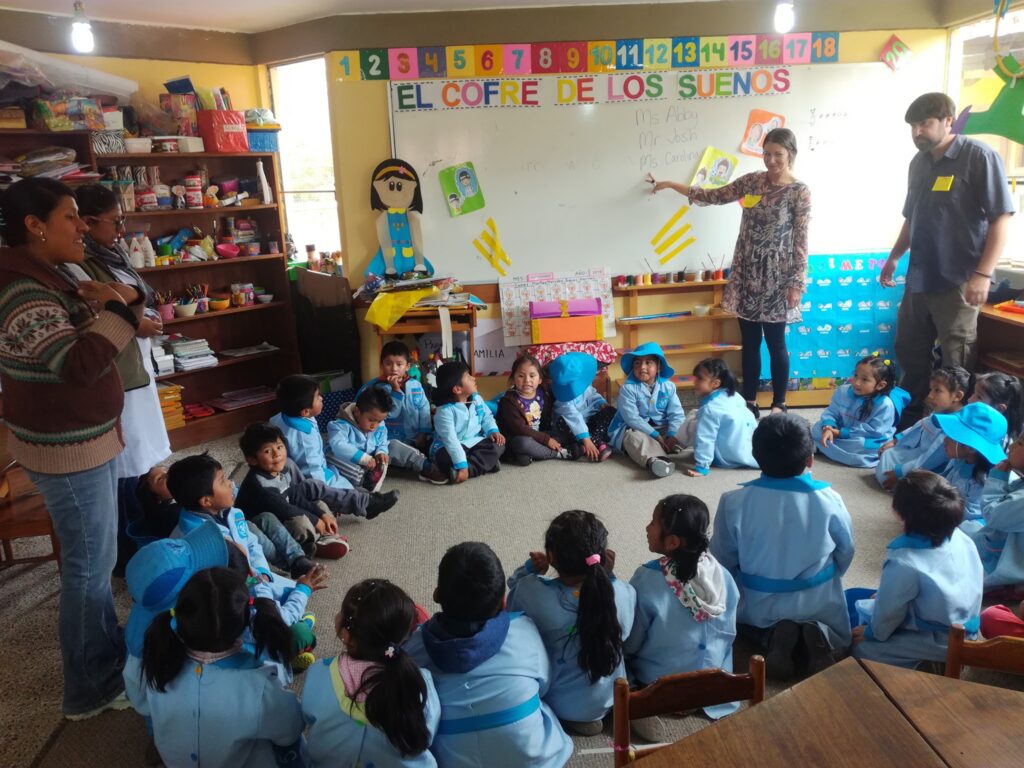Welcome to the green side of giving back! In this article, we will be exploring the world of eco-friendly projects and how they can make a positive impact on our environment.
Whether you’re passionate about wildlife conservation, environmental cleanup, sustainable agriculture, renewable energy, or education, there are countless ways you can get involved and contribute to a better, greener world. So, grab your reusable water bottle and let’s dive in!
Understanding Eco-Friendly Projects
Welcome to the world of eco-friendly projects! In this section, we will delve into what eco-friendly projects are, why they are important, and the different types of eco-friendly projects you can get involved in.
What are Eco-Friendly Projects?
Eco-friendly projects, also known as environmentally friendly or green projects, are initiatives that aim to have a positive impact on the environment and promote sustainability. These projects focus on conserving natural resources, reducing pollution, and minimizing waste.
Importance of Eco-Friendly Giving Back
Giving back to the environment through eco-friendly projects is crucial for several reasons:
- Preserving the Planet: By supporting eco-friendly projects, you contribute to the preservation of our planet’s delicate ecosystems, protecting them for future generations.
- Combatting Climate Change: Eco-friendly projects play a vital role in combating climate change by reducing greenhouse gas emissions and promoting sustainable practices.
- Strengthening Communities: These projects often involve community participation, fostering a sense of unity and shared responsibility for the environment.

Types of Eco-Friendly Projects
Eco-friendly projects come in various forms, catering to different aspects of environmental conservation. Here are some popular types of eco-friendly projects you can engage in:
- Wildlife Conservation Initiatives: These projects focus on protecting and preserving endangered species, natural habitats, and wildlife rehabilitation centers.
- Environmental Cleanup and Restoration: This type of project involves cleaning up oceans and beaches, restoring forests, and participating in community cleanup drives.
- Promoting Sustainable Agriculture: Supporting organic farming, encouraging permaculture practices, and educating farmers on sustainable techniques are all part of this category.
- Renewable Energy Projects: Installing solar panels, promoting wind energy solutions, and supporting research and development in renewable energy fall under this umbrella.
- Educational Initiatives: These projects aim to teach and raise awareness about eco-friendly practices, organizing workshops, and creating campaigns to educate the public.
By understanding the different types of eco-friendly projects, you can choose the one that aligns with your interests and values. Whether it’s working hands-on in wildlife conservation or promoting sustainable agriculture, there is something for everyone to contribute to a greener future.
In the next section, we will explore wildlife conservation initiatives and the impact they have on preserving our planet’s biodiversity.
Wildlife Conservation Initiatives
Wildlife conservation initiatives play a crucial role in preserving biodiversity and protecting endangered species. By taking part in these projects, we can contribute to the well-being of our planet and ensure a sustainable future for all living beings. In this section, we will explore the different ways in which you can get involved in wildlife conservation initiatives.
Protecting Endangered Species
One of the primary goals of wildlife conservation initiatives is to protect endangered species from extinction. These projects focus on creating and maintaining habitats that are essential for the survival and reproduction of these species. By participating in such initiatives, you can help safeguard the future of animals that are on the brink of extinction.

Preserving Natural Habitats
Preserving natural habitats is crucial for the survival of a wide range of wildlife species. Wildlife conservation initiatives work towards protecting and restoring these habitats, as well as preventing deforestation and urbanization. By supporting these projects, you can contribute to the preservation of diverse ecosystems and the species that rely on them for their survival.
Supporting Wildlife Rehabilitation Centers
Wildlife rehabilitation centers play a vital role in rescuing and rehabilitating injured and orphaned animals. These centers provide medical care, nourishment, and a safe environment for animals that have been impacted by human activities or natural disasters. By supporting and volunteering at these centers, you can directly contribute to the well-being and rehabilitation of wildlife.
Wildlife conservation initiatives not only help in the preservation of biodiversity but also provide opportunities for individuals to connect with nature and make a tangible impact. Whether it’s through volunteering, financial contributions, or raising awareness, everyone can play a part in wildlife conservation.
“In the end, we will conserve only what we love; we will love only what we understand, and we will understand only what we are taught.” – Baba Dioum
Environmental Cleanup and Restoration
Environmental cleanup and restoration efforts are critical for preserving our planet and ensuring a sustainable future. These initiatives focus on removing pollution, restoring natural habitats, and participating in community cleanup drives. By getting involved in environmental cleanup and restoration projects, individuals can make a significant impact in their communities and contribute to a healthier planet. In this section, we will explore the different ways you can participate in environmental cleanup and restoration.
Cleaning Up Oceans and Beaches
Oceans and beaches are essential ecosystems that are often impacted by pollution, plastic waste, and oil spills. Participating in beach cleanups is a fantastic way to contribute towards the conservation of marine life and the protection of coastal habitats. Here are some key ways individuals can get involved in ocean and beach cleanup projects:
- Join organized cleanup events: Many organizations and local communities host beach cleanup events, where volunteers can come together to collect and dispose of trash. These events are a great opportunity to make a visible impact and raise awareness about ocean pollution.
- Reduce plastic waste: One of the most effective ways to prevent ocean pollution is by reducing the use of single-use plastics. By opting for reusable alternatives like water bottles, shopping bags, and utensils, individuals can play their part in preventing plastic waste from ending up in our oceans.
Restoring Forests and Planting Trees
Forests play a crucial role in absorbing carbon dioxide, producing oxygen, and maintaining biodiversity. However, deforestation and habitat destruction are major concerns worldwide. Participating in reforestation projects and tree planting efforts can help restore and protect our forests. Here are some ways individuals can get involved in forest restoration:
- Join tree planting activities: Many organizations and local communities organize tree planting initiatives, where volunteers can participate in planting trees in deforested areas. This is a great hands-on way to contribute to the restoration of forests and offset carbon emissions.
- Support forest restoration projects: If you are unable to participate in tree planting activities, you can still make a difference by supporting organizations that focus on forest restoration. Donating to these projects or volunteering your time can help fund and further their efforts to rebuild healthy forest ecosystems.

Participating in Community Cleanup Drives
Community cleanup drives are an excellent way to address environmental issues in your local area. These initiatives aim to clean up parks, rivers, streets, and other public spaces. By participating in community cleanup drives, individuals can create a cleaner environment and inspire others to take action. Here are some suggestions to get involved:
- Become a volunteer: Reach out to local organizations, schools, or community groups to find out about upcoming cleanup drives. Volunteering your time and energy to these events can make a significant impact in creating a cleaner and greener community.
- Organize a cleanup event: If you notice a specific area in your community that requires attention, take the initiative to organize a cleanup event. Gather a group of friends, family, or neighbors, and work together to make a positive change in your surroundings.
Environmental cleanup and restoration initiatives are essential for maintaining the health of our planet. By actively participating in these projects, individuals can contribute to the conservation and restoration of ecosystems, promote sustainable practices, and inspire others to take action. So, let’s join hands and work towards making our planet a cleaner, greener, and healthier place for generations to come.
Promoting Sustainable Agriculture
Sustainable agriculture is not just about growing crops; it is about nurturing and preserving the land for future generations. By promoting sustainable agriculture, we can ensure a healthier environment, better food production, and increased resilience in the face of climate change. In this section, we will explore how you can contribute to sustainable agriculture through eco-friendly projects.
Supporting Organic Farming
Organic farming is a practice that promotes the use of natural fertilizers, such as compost, and avoids synthetic chemicals and genetically modified organisms (GMOs). By supporting organic farming, you are helping to:
- Maintain healthy soil: Organic farming practices prioritize soil health, which is essential for the long-term productivity of farmland. Healthy soil retains more water, reduces erosion, and promotes biodiversity.
- Protect biodiversity: The absence of chemical pesticides and fertilizers in organic farming creates a more harmonious ecosystem, allowing beneficial insects, birds, and other wildlife to thrive.
- Ensure safer food: Organic farming reduces the risk of chemical residues in our food. By choosing organic products, you are supporting healthier eating habits and minimizing your exposure to harmful pesticides.
Encouraging Permaculture Practices
Permaculture is a holistic approach to agriculture that aims to create sustainable and self-sufficient systems. By encouraging permaculture practices, you are helping to:
- Foster resilient ecosystems: Permaculture design principles mimic nature’s patterns and processes to create productive and resilient ecosystems. This approach reduces the reliance on external inputs, making the system more self-sustaining.
- Maximize resource efficiency: Permaculture embraces the concept of “recycle and reuse” by utilizing waste materials and maximizing the efficient use of resources such as water, energy, and nutrients.
- Improve food security: Permaculture focuses on diverse food production systems that can adapt to changing environmental conditions. By promoting permaculture, you are contributing to food security and reducing the vulnerability of communities to food shortages.
Educating Farmers on Sustainable Techniques
Education plays a crucial role in promoting sustainable agriculture. By providing farmers with the knowledge and skills to implement sustainable techniques, we can:
- Increase productivity: Sustainable agriculture practices, such as crop rotation, integrated pest management, and water conservation, can enhance agricultural productivity and yield.
- Mitigate climate change impacts: Sustainable techniques, such as agroforestry and conservation agriculture, promote carbon sequestration and resilience to climate change. By educating farmers on these practices, we can contribute to climate change mitigation efforts.
- Empower local communities: By equipping farmers with sustainable techniques, we empower them to make better decisions about their land and livelihood. This leads to stronger and more self-sufficient communities.
As you can see, promoting sustainable agriculture is not only beneficial for the environment but also for the well-being of farmers and communities. By supporting organic farming, encouraging permaculture practices, and educating farmers on sustainable techniques, you can make a positive impact on the agricultural sector and contribute to a greener future.
Next, let’s explore another eco-friendly project: Renewable Energy Projects.

Renewable Energy Projects
Renewable energy projects are initiatives that focus on harnessing and utilizing natural resources to generate sustainable and clean energy. These projects aim to reduce our dependence on non-renewable energy sources, such as fossil fuels, and combat climate change. By investing in renewable energy projects, individuals and organizations can contribute to a greener future and make a positive impact on the environment.
1. Installation of Solar Panels
One of the most popular forms of renewable energy is solar power. Solar panels convert sunlight into electricity, providing a clean and sustainable source of energy. Installing solar panels on residential and commercial buildings not only helps reduce carbon emissions but also lowers energy costs in the long run. Many organizations offer incentives and grants to encourage the adoption of solar energy, making it an attractive investment for individuals and businesses alike.
2. Promoting Wind Energy Solutions
Wind energy is another abundant and renewable source of power. Wind turbines capture the kinetic energy of the wind and convert it into electricity. Wind farms, which consist of multiple turbines, can generate a significant amount of energy, making them suitable for powering entire communities. By investing in wind energy projects and supporting the growth of wind farms, we can reduce our reliance on fossil fuels and decrease greenhouse gas emissions.
3. Supporting Research and Development in Renewable Energy
Investing in research and development (R&D) in the field of renewable energy is crucial for advancing sustainable technologies. By supporting organizations and initiatives focused on R&D, we can drive innovation in renewable energy sources, storage systems, and grid integration. Funding research projects and academic programs can help accelerate the adoption of renewable energy on a larger scale.
Renewable energy projects have numerous benefits, including:
- Reducing greenhouse gas emissions and combating climate change.
- Creating job opportunities in the renewable energy sector.
- Diversifying energy sources and increasing energy security.
- Lowering energy costs in the long run.
- Promoting technological advancements and innovation.
In conclusion, investing in renewable energy projects is an effective way to support the transition towards a sustainable and eco-friendly future. By harnessing the power of natural resources like the sun and wind, we can reduce our carbon footprint and mitigate the negative impacts of climate change. Whether it’s installing solar panels, promoting wind energy solutions, or supporting research and development in renewable energy, each contribution towards these projects makes a significant difference. Let’s join hands and embrace renewable energy for a greener tomorrow.
Educational Initiatives
Education is key when it comes to creating a sustainable future. By teaching individuals about eco-friendly practices, we can empower them to make a positive impact on the environment. Educational initiatives are an important aspect of eco-friendly projects, as they help raise awareness and provide knowledge on sustainable living. Here are some key educational initiatives that you can get involved in:
Teaching Eco-Friendly Practices
One of the most effective ways to promote eco-friendly living is through education. By teaching individuals about sustainable practices, we can encourage them to adopt green habits in their daily lives. This could include teaching them about recycling, reducing energy consumption, conserving water, and utilizing eco-friendly products. By instilling these practices from a young age, we can create a generation that is conscious of their impact on the environment.
Organizing Environmental Workshops
Workshops are a great way to engage with the community and provide them with hands-on learning experiences. You can organize workshops that focus on topics such as composting, gardening, and waste reduction. These interactive sessions allow individuals to learn about eco-friendly practices in a fun and engaging manner. By providing practical demonstrations and tips, you can empower attendees to implement these practices in their own homes.

Creating Awareness Campaigns
Another important aspect of educational initiatives is creating awareness campaigns. These campaigns can be in the form of social media campaigns, public events, or information sessions. The goal is to spread awareness about the importance of eco-friendly living and highlight the impact of individual actions on the environment. By creating catchy slogans, eye-catching graphics, and informative content, you can capture the attention of the community and motivate them to take action.
Educational initiatives play a crucial role in promoting eco-friendly practices. By teaching individuals about sustainable living, organizing workshops, and creating awareness campaigns, we can inspire and empower people to make environmentally conscious choices. Remember, even small changes can make a big difference when it comes to protecting our planet for future generations.
Teaching Eco-Friendly Practices
Organizing Environmental Workshops
Creating Awareness Campaigns
To make a positive impact on the environment, educational initiatives are key. By teaching individuals about eco-friendly practices, organizing workshops, and creating awareness campaigns, we can empower people to adopt sustainable habits and make a difference. Educational initiatives are an investment in the future, as they equip individuals with the knowledge and skills needed to protect our planet. Get involved in educational initiatives today and help create a greener and more sustainable world!
Conclusion
In conclusion, participating in eco-friendly projects is a meaningful and impactful way to give back to the environment. By supporting initiatives that focus on wildlife conservation, environmental cleanup and restoration, promoting sustainable agriculture, renewable energy projects, and educational initiatives, we can make a positive difference in our world. These projects not only help to protect and preserve our planet, but they also create awareness and educate others on the importance of sustainable living.
By contributing to wildlife conservation initiatives, we can play a role in protecting endangered species, preserving natural habitats, and supporting the rehabilitation of wildlife. This helps to maintain ecological balance and ensure the survival of diverse species.
Participating in environmental cleanup and restoration projects allows us to actively contribute to the health and wellbeing of our planet. By cleaning up oceans and beaches, restoring forests, and planting trees, we can help reverse the damage caused by pollution and deforestation. Additionally, participating in community cleanup drives helps to create a more sustainable and clean environment for everyone.
Supporting sustainable agriculture is another important aspect of eco-friendly giving back. By encouraging organic farming practices, promoting permaculture techniques, and educating farmers on sustainable farming methods, we can promote healthy and environmentally friendly food production.
Renewable energy projects play a crucial role in reducing our reliance on fossil fuels and mitigating the effects of climate change. By supporting the installation of solar panels, promoting wind energy solutions, and investing in research and development in renewable energy, we can contribute to a greener and more sustainable energy future.
Educational initiatives are key to creating awareness and fostering a deeper understanding of the importance of eco-friendly practices. By teaching others about sustainable living, organizing environmental workshops, and creating awareness campaigns, we can inspire individuals to make conscious choices that have a positive impact on the environment.
In conclusion, participating in eco-friendly projects not only benefits the environment but also allows us to be part of a global movement towards sustainability. Each small step we take can make a significant difference in helping to protect our planet for future generations. So let’s come together, embrace eco-friendly giving back, and make a positive impact on the world around us.
Frequently Asked Questions
- What are some eco-friendly projects offered by A Broader View?A Broader View offers various eco-friendly projects such as reforestation initiatives, wildlife conservation programs, sustainable agriculture projects, clean energy initiatives, and environmental education programs.
- How do eco-friendly projects benefit the environment?Eco-friendly projects benefit the environment by tackling issues like deforestation, climate change, habitat degradation, and pollution. They contribute to the preservation of biodiversity, the restoration of ecosystems, and the promotion of sustainable practices.
- Can I volunteer for eco-friendly projects with A Broader View?Yes, A Broader View offers volunteer opportunities for eco-friendly projects. You can join their projects abroad and make a positive impact on the environment by participating in reforestation efforts, wildlife monitoring, sustainable farming, and more.
- How can I support eco-friendly projects if I cannot volunteer?If you cannot volunteer, you can support eco-friendly projects by donating to organizations like A Broader View that are actively involved in environmental initiatives. Your donations can contribute to funding conservation efforts, educational programs, and sustainable development projects.
- Why should I choose eco-friendly projects with A Broader View?Choosing eco-friendly projects with A Broader View allows you to contribute to the global effort of environmental conservation, gain hands-on experience in sustainability practices, learn about local ecosystems and cultures, and make a lasting positive impact on the communities and environments you work with.



